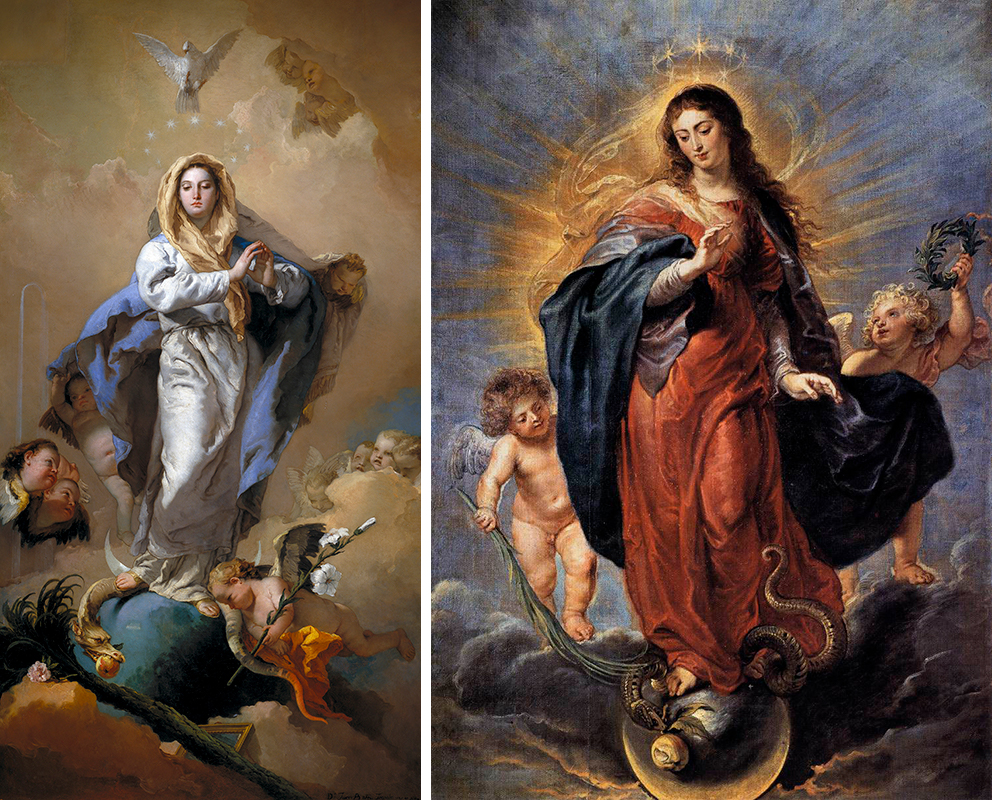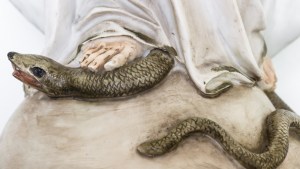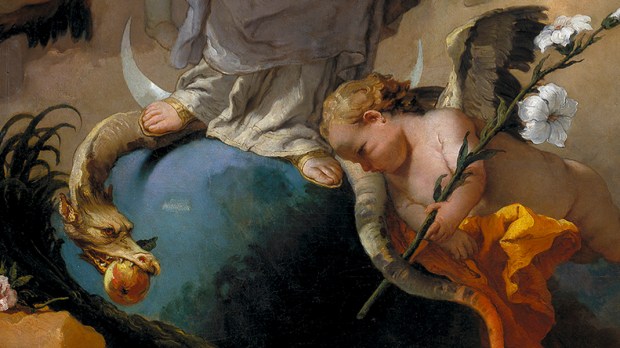One of the most common depictions of the Virgin Mary has her standing on a snake. Why is that?
The tradition finds its roots in a biblical verse that was translated in the Latin Vulgate (which was later translated into English in the Douay-Rheims Bible). In the Book of Genesis, shortly after Adam and Eve ate the forbidden fruit in the garden, God curses the serpent who tricked them and foretells his ultimate destruction.
I will put enmities between thee and the woman, and thy seed and her seed: she shall crush thy head, and thou shalt lie in wait for her heel. (Genesis 3:15)
Initially this was taken by the Church to refer to Mary, the woman who would give birth to the Messiah. It would be through her “Yes,” that Satan would be defeated and the curse of Eve lifted.
St. Irenaeus puts it eloquently, “[Jesus’] obedience on the tree of the cross reversed the disobedience at the tree in Eden; the good news of the truth announced by an angel to Mary, a virgin subject to a husband, undid the evil lie that seduced Eve, a virgin espoused to a husband. As Eve was seduced by the word of an angel and so fled from God after disobeying his word, Mary in her turn was given the good news by the word of an angel, and bore God in obedience to his word.”

At the same time, the Greek Septuagint translates it as “he shall crush your head,” referring instead to Jesus Christ. This was debated throughout the history of the Church, as St. Alphonsus Liguori relates in his book The Glories of Mary.
Mary, then, was this great and valiant woman, who conquered the devil and crushed his head by bringing down his pride, as it was foretold by God Himself: “she shall crush thy head.” Some doubt as to whether these words refer to Mary, or whether they do not rather refer to Jesus Christ; for the Septuagint renders them, “He shall crush thy head.” But in the Vulgate … we find “SHE,” and not “He;” and thus it was understood by Saint Ambrose, Saint Jerome, Saint Augustine, and a great many others.
St. Alphonsus admits that, either way, it was through the victory won by Jesus.
However, be it as it may, it is certain that either the Son by means of the Mother, or the Mother by means of the Son, has overcome Lucifer; so that, as Saint Bernard remarks, this proud spirit, in spite of himself, was beaten down and trampled under foot by this most Blessed Virgin; so that, as a slave conquered in war, he is forced always to obey the commands of this Queen. Beaten down and trampled under the feet of Mary, he endures a wretched slavery.
The good news is that Satan, the “serpent,” has been defeated through the sacrifice of Jesus on the cross. Mary’s “Yes” made that possible, and through her free choice our Messiah came into the world.
Mary remains the “Terror of Demons,” and it is no surprise that demons often flee at the name of Mary, fearful of the woman who reversed the disobedience of Eve.

Read more:
This is why the devil hates the Virgin Mary

Read more:
St. John Bosco’s prayer to the Virgin Mary against demonic spirits

